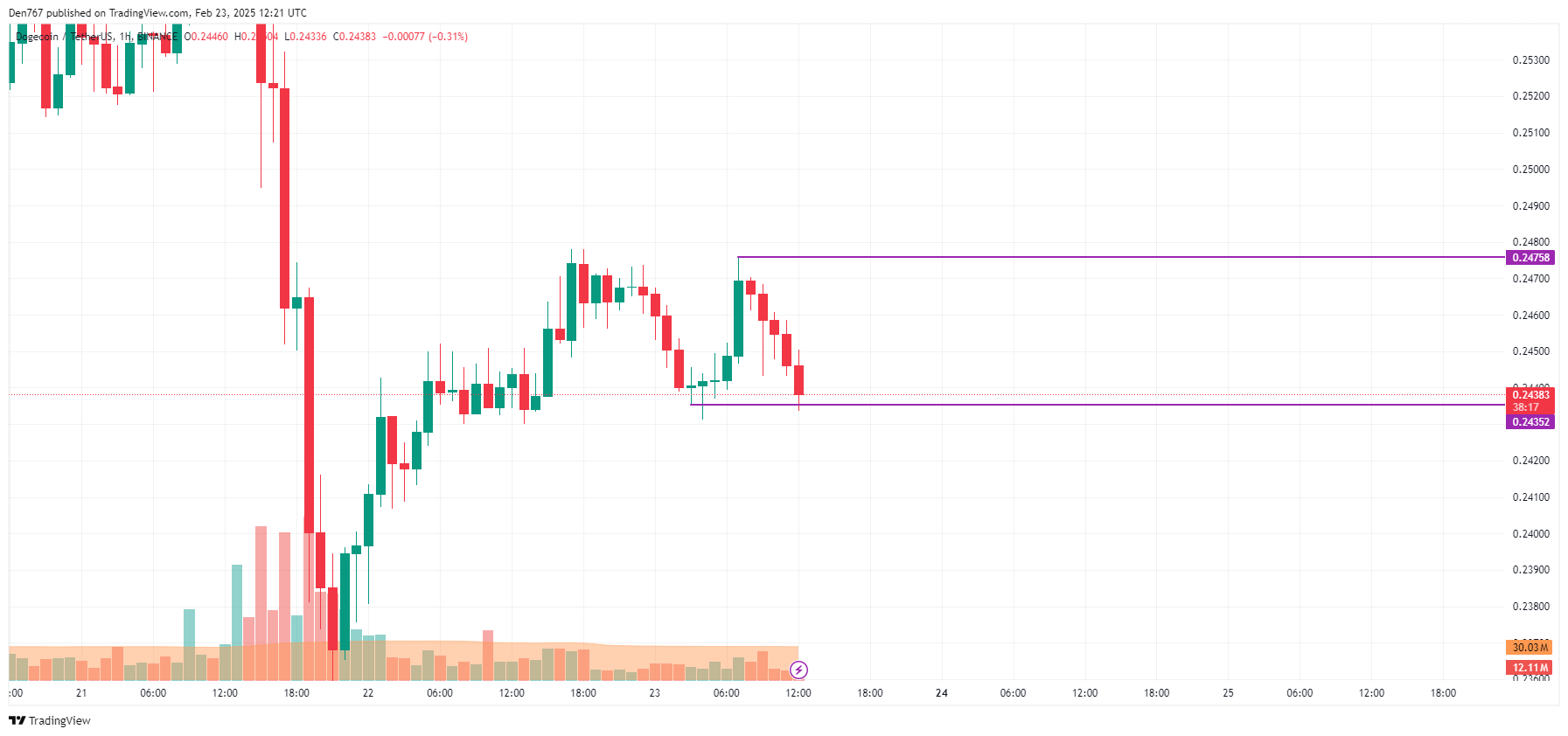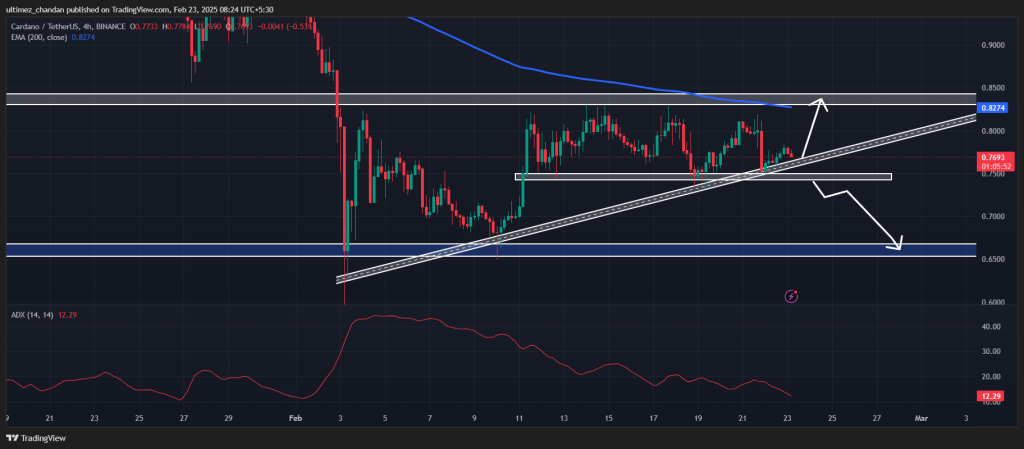Category: Forex News, News
Sellers could retain control while 1.0440 holds as resistance
- EUR/USD enters a consolidation phase following a three-day decline.
- Sellers could remain interested in case EUR/USD fails to reclaim 1.0440.
- The US economic calendar will feature weekly Initial Jobless Claims data.
EUR/USD moves sideways below 1.0450 after closing the previous three days in negative territory. In the absence of high-tier data releases, the risk mood could influence the pair’s action in the second half of the day.
Euro PRICE This week
The table below shows the percentage change of Euro (EUR) against listed major currencies this week. Euro was the weakest against the Japanese Yen.
| USD | EUR | GBP | JPY | CAD | AUD | NZD | CHF | |
|---|---|---|---|---|---|---|---|---|
| USD | 0.57% | -0.18% | -1.25% | 0.25% | -0.40% | -0.20% | 0.33% | |
| EUR | -0.57% | -0.60% | -1.85% | -0.22% | -0.89% | -0.65% | -0.14% | |
| GBP | 0.18% | 0.60% | -1.16% | 0.38% | -0.23% | -0.05% | 0.46% | |
| JPY | 1.25% | 1.85% | 1.16% | 1.50% | 0.89% | 1.31% | 1.56% | |
| CAD | -0.25% | 0.22% | -0.38% | -1.50% | -0.62% | -0.43% | 0.08% | |
| AUD | 0.40% | 0.89% | 0.23% | -0.89% | 0.62% | 0.24% | 0.75% | |
| NZD | 0.20% | 0.65% | 0.05% | -1.31% | 0.43% | -0.24% | 0.51% | |
| CHF | -0.33% | 0.14% | -0.46% | -1.56% | -0.08% | -0.75% | -0.51% |
The heat map shows percentage changes of major currencies against each other. The base currency is picked from the left column, while the quote currency is picked from the top row. For example, if you pick the Euro from the left column and move along the horizontal line to the US Dollar, the percentage change displayed in the box will represent EUR (base)/USD (quote).
The minutes of the Federal Reserve’s (Fed) January policy meeting showed late Wednesday that some policymakers cited potential changes in trade and immigration policy as having potential to hinder the disinflation process. Although investors largely ignored this publication, the cautious market stance helped the US Dollar (USD) hold its ground and didn’t allow EUR/USD to stage a rebound.
Later in the day, the US Department of Labor will publish the weekly Initial Jobless Claims data. Markets expect the number of first-time applications for unemployment benefits to rise to 215,000 in the week ending February 15 from 213,000 in the previous week. A reading at or below 200,000 could support the USD with the immediate reaction and cause EUR/USD to stretch lower. On the other hand, a print above 230,000 could have the opposite impact on the pair’s action.
Meanwhile, US stock index futures were last seen losing between 0.2% and 0.3%. A bearish opening in Wall Street, followed by a sharp decline in main equity indexes, could allow the USD to benefit from safe-haven flows and open the door for an extended slide in EUR/USD.
EUR/USD Technical Analysis
The Relative Strength Index (RSI) indicator on the 4-hour chart stays below 50, highlighting a lack of buyer interest.
On the downside, 1.0390-1.0400 (100-period Simple Moving Average (SMA), 50-day SMA, Fibonacci 50% retracement of the latest downtrend) aligns as the first support area before 1.0370 (200-period SMA) and 1.0350 (Fibonacci 38.2% retracement).
In case EUR/USD climbs above 1.0440 (Fibonacci 61.8% retracement) and confirms this level as support, technical sellers could be discouraged. Above this resistance, 1.0500-1.0510 (round level, Fibonacci 78.6% retracement) and 1.0550 (static level) could be seen as next hurdles.
Euro FAQs
The Euro is the currency for the 19 European Union countries that belong to the Eurozone. It is the second most heavily traded currency in the world behind the US Dollar. In 2022, it accounted for 31% of all foreign exchange transactions, with an average daily turnover of over $2.2 trillion a day. EUR/USD is the most heavily traded currency pair in the world, accounting for an estimated 30% off all transactions, followed by EUR/JPY (4%), EUR/GBP (3%) and EUR/AUD (2%).
The European Central Bank (ECB) in Frankfurt, Germany, is the reserve bank for the Eurozone. The ECB sets interest rates and manages monetary policy. The ECB’s primary mandate is to maintain price stability, which means either controlling inflation or stimulating growth. Its primary tool is the raising or lowering of interest rates. Relatively high interest rates – or the expectation of higher rates – will usually benefit the Euro and vice versa. The ECB Governing Council makes monetary policy decisions at meetings held eight times a year. Decisions are made by heads of the Eurozone national banks and six permanent members, including the President of the ECB, Christine Lagarde.
Eurozone inflation data, measured by the Harmonized Index of Consumer Prices (HICP), is an important econometric for the Euro. If inflation rises more than expected, especially if above the ECB’s 2% target, it obliges the ECB to raise interest rates to bring it back under control. Relatively high interest rates compared to its counterparts will usually benefit the Euro, as it makes the region more attractive as a place for global investors to park their money.
Data releases gauge the health of the economy and can impact on the Euro. Indicators such as GDP, Manufacturing and Services PMIs, employment, and consumer sentiment surveys can all influence the direction of the single currency. A strong economy is good for the Euro. Not only does it attract more foreign investment but it may encourage the ECB to put up interest rates, which will directly strengthen the Euro. Otherwise, if economic data is weak, the Euro is likely to fall. Economic data for the four largest economies in the euro area (Germany, France, Italy and Spain) are especially significant, as they account for 75% of the Eurozone’s economy.
Another significant data release for the Euro is the Trade Balance. This indicator measures the difference between what a country earns from its exports and what it spends on imports over a given period. If a country produces highly sought after exports then its currency will gain in value purely from the extra demand created from foreign buyers seeking to purchase these goods. Therefore, a positive net Trade Balance strengthens a currency and vice versa for a negative balance.
Written by : Editorial team of BIPNs
Main team of content of bipns.com. Any type of content should be approved by us.
Share this article:










